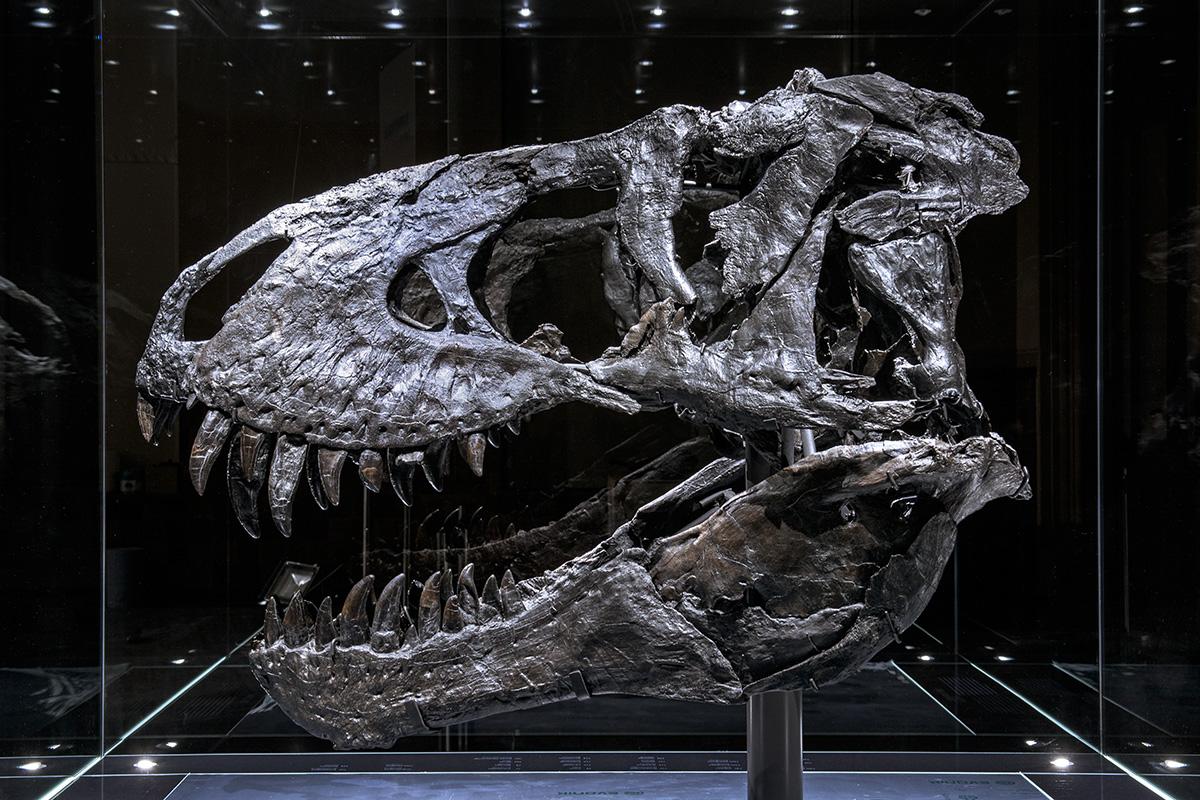TRISTAN is one of the world’s best-preserved Tyrannosaurus rex specimens, and it’s on its way to Berlin. Research on the original skull will begin immediately after arrival, involving the Museum für Naturkunde Berlin, Leibniz Institute for Evolution and Biodiversity Research with its own team of scientists. These will work in close connection with partners in science and research, as well as industry and public institutions. From December 2015, the original skeleton will be shown to the public for the first time in a special exhibition. Housing the only original T. rex skeleton in Europe ( April 2016) at the time will be a new milestone in the exhibition history of the Museum. The research team will contribute and present its results incrementally during the exhibition.
The Museum für Naturkunde Berlin has a worldwide reputation for its exhibitions and as an integrated research museum, cooperating with research partners in over 60 countries. Our research is relevant, covering everything from biodiversity discovery, origins of disease or simulation of meteorite impacts. We study the present and the past to advise on the future – in communicate about our science to raise awareness and encourage engagement for nature.
TRISTAN is a fantastic specimen/object through which to highlight our divers and relevant science, says Director General Prof. Johannes Vogel, PhD. “TRISTAN is unique as a fossil as well as an opportunity for Berlin, Germany and natural history research worldwide.”
The skeleton of Tyrannosaurus rex was found in Montana, USA, in 2012. International experts judge it to be an extraordinary specimen. The Museum für Naturkunde Berlin is long established as an international centre of excellence in dinosaur research. Thus, the owner and sponsor Niels Nielsen agreed to send the approximately 70 million year-old fossil to Berlin for at least three years – on condition that the scientific community will conduct research and that it will be on public display.
Weight, motion, speed and force of bite will be studied in anatomical research, supported by CT imaging, 3D scanning and computer modelling. Scientists hope to gain a beeter understanding of the carnivorous dinosaur. What diseases did Tristan suffer – and what does this tell us about modern diseases? High-resolution CT scans of the skull are expected to shed light on such questions. The scientists are also looking into Tristan‘s individual history, how old he was, what injuries he might have suffered, what might have caused his death. A team of scientists will travel to the excavation site in Montana immediately to conduct further excavations. This will tell us more about the habitat and circumstances of this giant carnivore.
